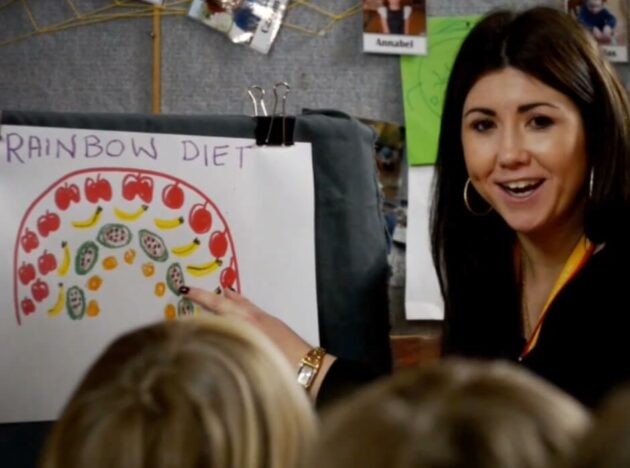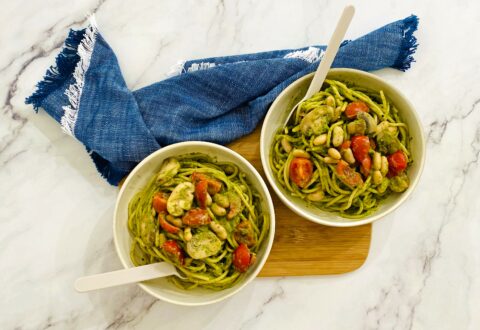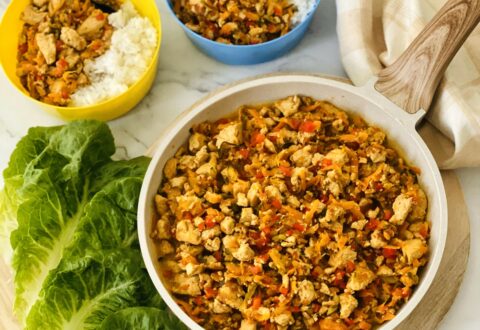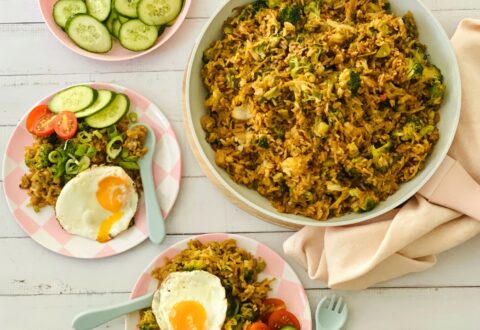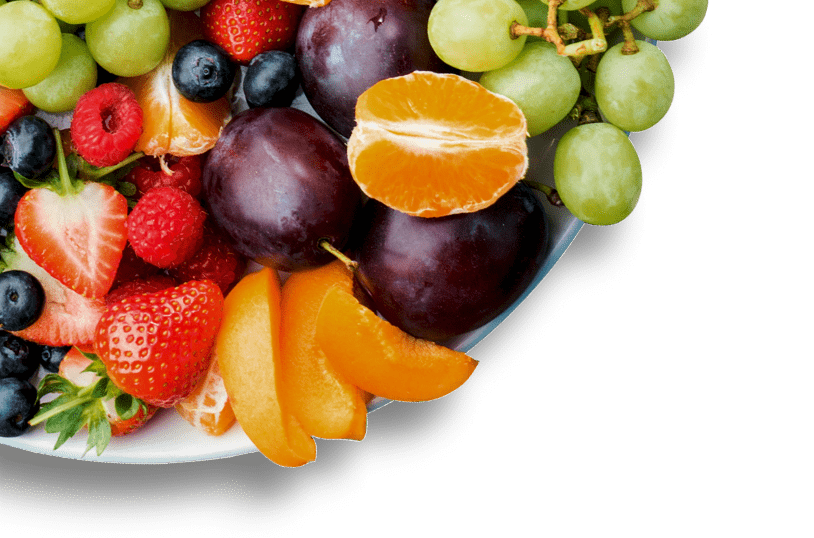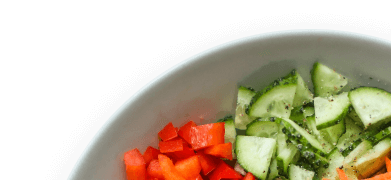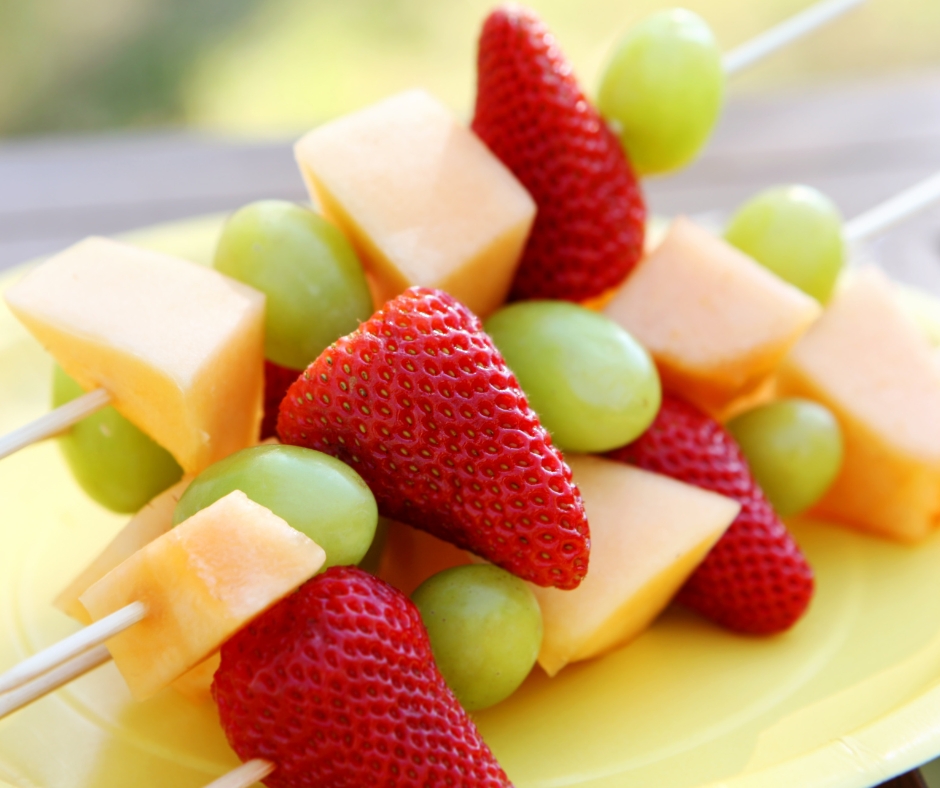Taste the rainbow
This is a rainbow-themed series of activities that involve reading, cooking and tasting vegetables in different colours.
These activities can be done over a few days or a week to expose children to new foods, whilst working on various learning outcomes.

It is aimed at 2-4 year olds, but you can tailor all the activities to suit the children in your care, and whatever equipment you have on hand in your service.
This activity has 3 parts:
Part 1: Read the rainbow. Read books about vegetables to introduce the children to the idea of ‘rainbow vegetables’ and why we should eat them.
Part 2: Cook the rainbow. Involve children in cooking, by getting them to choose the recipe and vegetables to go in your rainbow recipe, and then help you put it together.
Part 3: Eat the rainbow. This is a guided experience where the children get exposed to new vegetables in a safe and exploratory manner.
Part 1: Read the rainbow
You will need:
- A reading spot
- A vegetable-themed book
Process:
- Bring the children together in a quiet reading spot and tell them about the story you are going to read together. As you are reading the story ask the children prompting questions.
- Read the story. As you go, engage the children by asking questions, such as:
- “What colours can you see on this page?”
- “What vegetables can you see here?”
- “Who can tell me what this vegetable is called?”
Read the story several times over a 1-2 weeks before moving on to Part 2. This allows children to better engage with the story and its healthy eating messages.
| I'm having a rainbow for dinner, by NAQ Nutrition | I can eat a rainbow, by Annabel Karmel | I will never not ever eat a tomato, by Lauren Child |
| We're growing a rainbow, by NAQ Nutrition | Eating the alphabet, by Lois Ehlert | Monsters don't eat broccoli, by Jean Barbara Hicks |
| Jasper McFlea will not eat his tea, by Lee Fox & Mitch Vane | Oliver's vegetables, by Vivian French | Rainbow Plate, by Dr Preeya Alexander |
| Cools as a cucumber, by Sally Smallwood | Are you eating something green? by Ryan Sias | Super Veggie Four, by Golden Plains Shire |
Part 2: Cook the rainbow
You will need:
- Some simple vegetable-packed recipes, such as pizzas, salad, or soup
- Vegetables in 3-5 different colours
- Cooking equipment (this will depend on what you are making, and the facilities you have)
- A spot for cooking
Process:
- This activity should be child-led. Start by presenting the children with a couple of meal options to select from.
- Guide them to select the colours of vegetables that should go into the recipe. For example, if the children chose pizza, they might pick red tomato, green spinach, yellow capsicum, orange pumpkin andpurple eggplant.
- Once the recipe and key ingredients have been selected, you can start cooking!
- As you are cooking, to involve the children and talk about what you are doing, ask questions, such as:
- “Lilly could you come and help me put the capsicum on our pizza?”
- “What colour should we add next?”
- “How do you think it will taste?”
- “Are you excited to try our recipe?”
- “Is this enough?”
- “Let’s count together as we add the pumpkin pieces. 1, 2…”
- Make sure you follow proper food safety and hygiene practices. Always get the children to wash their hands before and after cooking activities.
- You can find healthy recipe ideas on our website and the Try for 5 website.
Part 3: Taste the rainbow
You will need:
- Your vegetable recipe, cooked and ready to taste
- A mealtime location
Process:
- Sit the children at a table so they can see you.
- Announce that you are going to try the food you have made together, and talk about it to encourage the children to reflect. Ask questions, such as:
- “What colours can you see?”
- “Do you remember what we put in our recipe?”
- “Can you smell it? What does it smell like?”
- “I think I will taste the orange colour first. What will you try first?”
- Serve the food, and use prompts to encourage the children to try eating the different colours of vegetables. Make sure they see you eating it too; and talk to them about the food. Ask questions, such as:
- “I wonder if it’s crunchy. I’m going to bite it! Did you hear that? It’s chewy, not crunchy. Is yours crunchy?”
- “Great tasting, Sarah. Ryan, what is your favourite colour? Give it a little nibble to see what it tastes like?”
- “Are you going to have a shark bite or a fish nibble?”
The key is to ensure this is a fun, safe environment for the children to explore new things. It is important that they are not pressured in any way, and feel encouraged to try something new in whatever way they feel comfortable. Even if they do not eat anything, and just touch it or smell it instead, that is a great step in the right direction.
Doing this activity just before mealtime allows the children to taste the food when they’re likely to be hungry. But if they weren’t ready to try much, they still have a chance to eat something familiar shortly after.
Where to next?
Critical reflection questions to consider how you can extend these activities
- How can you extend on this learning experience?
- What does embedding healthy eating activities into the curriculum look like for different age groups?
- How can you involve your families in these activities?
- What components of these activities can you build on, to continue to scaffold the children’s learning?
- How did the children respond to, and engage in, the activities?
- Where do you think the children might want to go next, and how can you extend the activities?
Links to learning and development frameworks
National Quality Standard
https://www.acecqa.gov.au/nqf/national-quality-standard
- Quality Area 1: Education program and practice (Elements 1.2.1, 1.2.2)
- Quality Area 2: Children’s health and safety (Element 2.1.3)
- Quality Area 3: Physical environment (Elements 3.1.1, 3.2.2)
- Quality Area 5: Relationships with children (Elements 5.1.1, 5.2.1, 5.2.2)
Early Years Learning Framework
https://www.acecqa.gov.au/nqf/national-law-regulations/approved-learning-frameworks
- Learning Outcome 1:
- Children develop their emerging autonomy, inter-dependence, resilience, and sense of agency
- Children learn to interact in relation to others with care, empathy and respect.
- Learning Outcome 2: Children respond to diversity with respect
- Learning Outcome 3: Children have a strong sense of wellbeing
- Learning Outcome 4: Children are confident and involved learners
- Learning Outcome 5: Children interact verbally and non-verbally with others for a range of purposes
Developmental Skills
- Social skills: Active listening, interactions with others, turn-taking, patience, concentration, language
- Cognition: Enhancing knowledge, learning new skills, critical thinking
- Motor skills: Fine and gross motor- sitting, measuring, tipping, stirring, using cutlery
- STEM skills: Mathematics, science
For more information please phone 1300 22 52 88 or email heas@nnf.org.au
Except where otherwise indicated, the images in this document show models and illustrative settings only, and do not necessarily depict actual services, facilities or recipients of services. This document may contain images of deceased Aboriginal and Torres Strait Islander peoples. In this document, ‘Aboriginal’ refers to both Aboriginal and Torres Strait Islander people. ‘Indigenous’ or ‘Koori/Koorie’ is retained when part of the title of a report, program or quotation. Copyright © State of Victoria 2016
Written and reviewed by dietitians and nutritionists at National Nutrition Foundation, with support from the Victorian Government.

Featured Recipes
Explore all recipes
Register your interest
"*" indicates required fields

